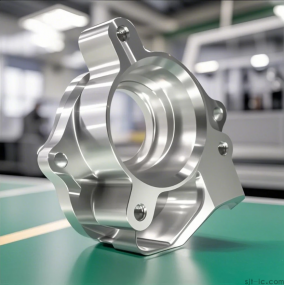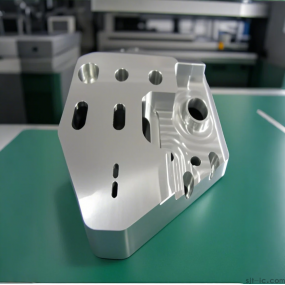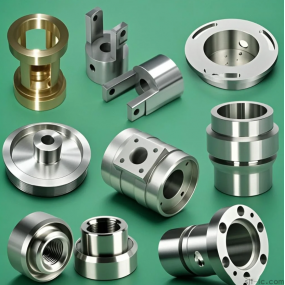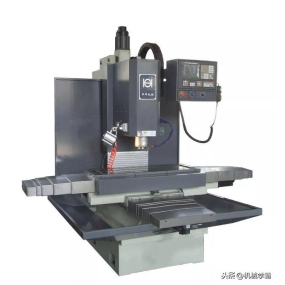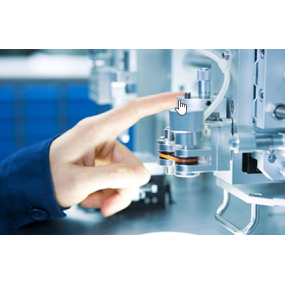Staring at a complex part design and wondering if a 4-axis machine is enough, or if you *need* the power of 5-axis? 🤔 You're not alone. Choosing the wrong setup can mean wasted time, higher costs, and parts that just don't meet the mark. Let's cut through the confusion and break down the real difference in plain English.

So, What Exactly Is the Core Difference?
Think of it like this: a 3-axis machine moves a tool up/down, left/right, and forward/backward. Simple. Now, a 4-axis machine adds one rotating spin, usually around the X-axis (we call this the A-axis). It's like the part can turn on a lathe while being carved. A 5-axis machine adds a second rotational tilt on top of that (like a B or C axis). This means the part or the tool can approach from almost any angle in a single setup. 🎯 That's the big deal: one setup vs. multiple setups.
When Should You Stick With 4-Axis Machining?
4-axis is fantastic for a lot of common jobs. It's often more than enough.
▶ Cylindrical Parts are Its Sweet Spot: If you need milling, drilling, or engraving around a cylinder (like a cam or a gear), 4-axis is your go-to. It handles these tasks smoothly and efficiently.
▶ It's Generally More Cost-Effective: Let's be real, 4-axis machines usually cost less to buy and operate. For many projects, the extra cost of 5-axis just doesn't make financial sense.
▶ Simpler Can Be Faster for Basic Jobs: For parts that don't have crazy undercuts or complex contours, a 4-axis machine might actually complete the job faster because the programming can be more straightforward.

The Game-Changer: Why 5-Axis Can Be a "Magic Tool"
This is where things get interesting. 5-axis machining unlocks a new level of possibility, but it's not magic for every single job.
▶ Complex Geometries in One Go: Imagine machining an impeller or a turbine blade. With 5-axis, the part is fixed once, and the tool dances around it, reaching every nook and cranny. This eliminates the need to manually reposition the part, which saves a ton of time and, more importantly, drastically reduces the chance of errors.
▶ Mind-Blowing Surface Finish: Because the tool can constantly maintain the optimal angle to the part surface, you often get a much smoother, higher-quality finish right off the machine. Less hand-finishing means lower labor costs.
▶ However, It's Not All Sunshine... The programming for 5-axis is significantly more complex. It requires specialized software and a skilled programmer. And, of course, the initial investment is much higher. Sometimes, a well-planned 4-axis job can be more economical than a "lazy" 5-axis one.
A Quick Comparison Table: 4-Axis vs. 5-Axis at a Glance
Let's lay it out side-by-side.
Feature | 4-Axis | 5-Axis
Number of Movements | 3 Linear + 1 Rotational | 3 Linear + 2 Rotational
Best For | Cylindrical parts, milling on sides | Complex contours, sculptures, aerospace parts
Typical Cost | Lower | Higher
Setup Time | May require multiple setups | Often a single setup
Skill Required | Moderate | High (for programming)

My Take: It's About the Part, Not the Prestige
I've seen shops get obsessed with getting a 5-axis machine because it sounds advanced. But the smartest move is always to match the tool to the job. A 5-axis machine doing work a 4-axis could handle is a waste of resources. The real skill lies in knowing exactly what you need to achieve the best balance of quality, speed, and cost for your specific project. 🧠
Still unsure which process is the perfect fit for your component? The best way to know for sure is to talk it through with an expert. Get a direct consultation for your project – our team is ready to help you make the right choice.


 Spanish
Spanish Arabic
Arabic French
French Portuguese
Portuguese Belarusian
Belarusian Japanese
Japanese Russian
Russian Malay
Malay Icelandic
Icelandic Bulgarian
Bulgarian Azerbaijani
Azerbaijani Estonian
Estonian Irish
Irish Polish
Polish Persian
Persian Boolean
Boolean Danish
Danish German
German Filipino
Filipino Finnish
Finnish Korean
Korean Dutch
Dutch Galician
Galician Catalan
Catalan Czech
Czech Croatian
Croatian Latin
Latin Latvian
Latvian Romanian
Romanian Maltese
Maltese Macedonian
Macedonian Norwegian
Norwegian Swedish
Swedish Serbian
Serbian Slovak
Slovak Slovenian
Slovenian Swahili
Swahili Thai
Thai Turkish
Turkish Welsh
Welsh Urdu
Urdu Ukrainian
Ukrainian Greek
Greek Hungarian
Hungarian Italian
Italian Yiddish
Yiddish Indonesian
Indonesian Vietnamese
Vietnamese Haitian Creole
Haitian Creole Spanish Basque
Spanish Basque

